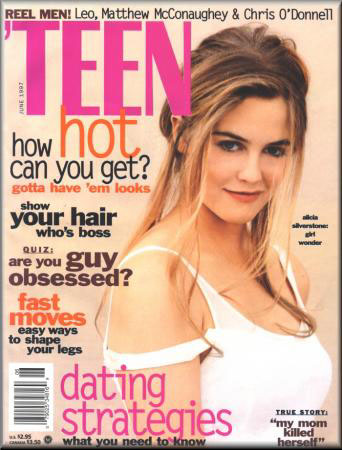
You’ve got to give Easy Bake Ovens some credit where due--they managed to stay alive in the marketplace a good 40 years before Consumer Product and Safety Commission gave any consideration to the fact that children could burn their fingers while playing with the toy. They either had some really fabulous marketing campaigns or parents so loved the tasty pastry delicacies provided by their child labor bakery sweatshops that they were willing to overlook the potential risks. Then again, perhaps any kid that manages to burn herself on a dinky 100 watt light bulb probably had it coming. After all, that’s just a basic Easy Bake Oven evolutionary principle.
Regardless of their inherent safety risks, Easy Bake Ovens were a highly coveted item for young girls as early as the 1960s. The original Kenner-produced 1963 version was modeled after a conventional oven, though later incarnations were styled to resemble microwaves--which makes perfect sense, considering how often most of us bake cookies in the microwave. The sleeker design in the updated version gave it a more novel technological feel, possibly to counteract the raging stereotypes associated with continually providing young girls with toys that teach them the value of staying in the kitchen where they belong.
Feminists may not have been especially keen on little girls playing with model kitchens and learning domestic complacency, but the cultural implications did little to hamper kids’ insatiable desire to own one of these functioning appliances. Children tend not to care too much about the longstanding impact of their toy selection, though, so the head-shaking of women’s rights advocates held little bearing on their playtime choices. Kids just like what they like, and for the most part, a chance to bake cookies on their own under a little light bulb falls into that category.
As our moms (or dads, to be fair) were generally unlikely to relinquish kitchen privileges to an 8-year old, the Easy Bake Oven provided a small-scale alternative. Though parents usually aren’t especially keen on toys that are overpriced and prone to generating heavy clean-up, it was often a fair trade to keep us good and occupied for an hour or two. When weighing the options of cost, mess, and safety risk, sixty minutes of quiet tended to win out as a priority.
Like Power Wheels cars and Moon Shoes, Easy Bake Ovens were among the most status-building of 80s and 90s toys. Unsurprisingly, these toys building us the most playground credibility tended to also be the most expensive. We all had a friend whose parents were kind enough to grant them ownership of one of these enviable playthings, leading to incessant begging and pleading for our very own.
Even if you were lucky enough to have your own EBO, these devices were decidedly overrated. Baking anything took a great deal of effort for a relatively small payoff. Actually, a literally small payoff: many of the tasty treats that looked so life-sizedly delicious in the commercials were proportionately lacking in real life. Brownies and cupcakes are universally tasty, sure, but not quite as satisfying when the whole thing can be chomped down in two bites.

If nothing else, these ovens probably helped develop some patience in young children. Kids are usually driven by instant gratification, so it’s pretty incredible to think any of us had it somewhere within our antsy juvenile beings to wait the length of time it took for a lightbulb to bake a batch of cookies. I suppose the 100-watt bulbs in later models are a step up from the original 60-watt model, but I would never now consider trying to bake a mini bundt cake against the heat of my reading lamp. It’s bright, sure, but I’ve never really considered it as an oven-like source of heat.
In the mid 2000s, Hasbro issued a recall on Easy Bake Ovens due to some cases of severe burns, the most severe of which resulted in amputations. Apparently the aforementioned impatient children were greedily sticking their little hands into the ovenfront and getting their tiny fingers stuck in the heating chamber. Ouch.
Luckily the problems have since been ironed out (though hopefully not with a real iron--too much high heat.) The Easy Bake is back on the market and better than ever. Those ads are still as convincing as they were 15 years ago. Deep down, I know I can use the big girl oven like any adult, but there’s just something so magical about cooking by lightbulb. In that spirit, I think I’ll cook my next batch of cupcakes by lamplight as a tribute.. Yum.












